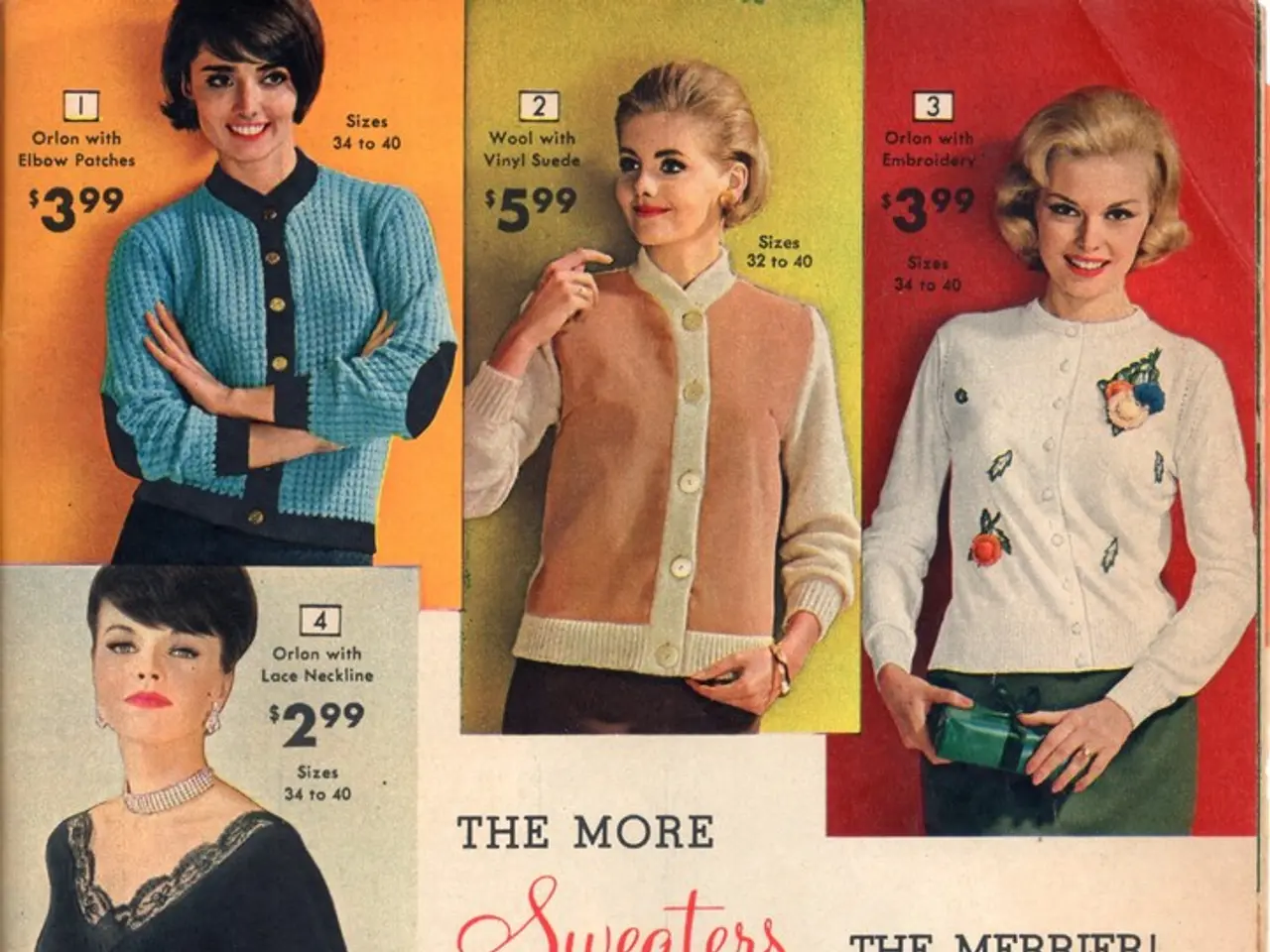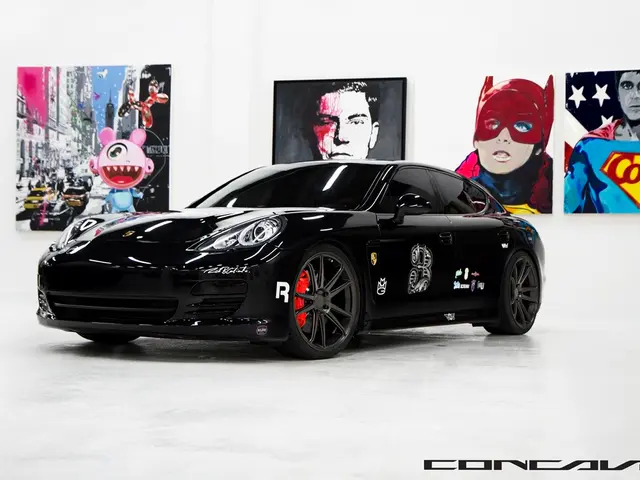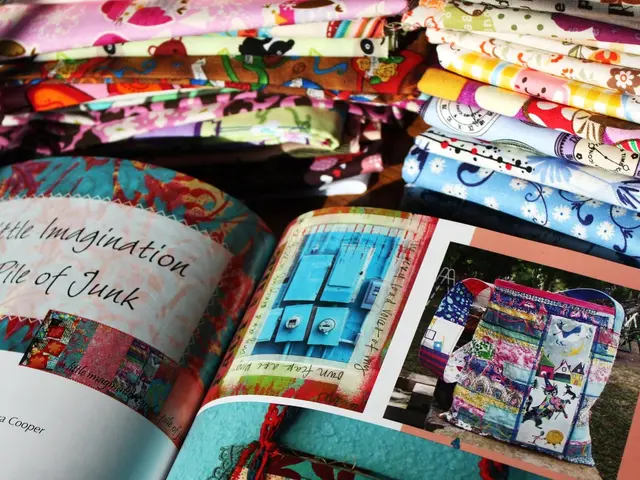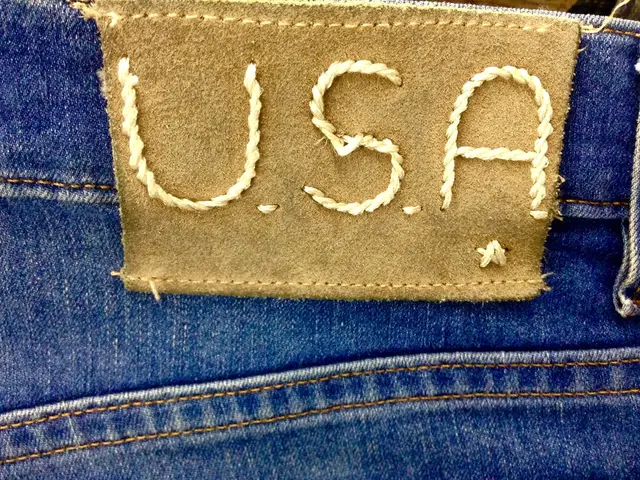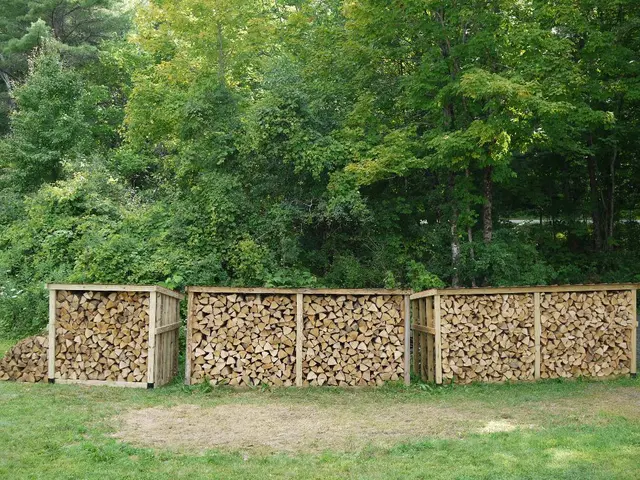19th-Century Style: Exploring Fashion Trends and Additional Details
The Victorian era, spanning from 1837 to 1901 during Queen Victoria's reign, was a time of profound change and extravagance in the world of fashion. This period witnessed the introduction of various innovations and trends that revolutionised the way people dressed, reflecting societal changes, cultural influences, and the evolving ideals of beauty.
One of the most significant inventions that transformed women's fashion was the crinoline, introduced around 1856. This innovative undergarment provided women with more freedom of movement while retaining the favoured bell shape. Underneath the puffed sleeves, women wore engagements - fake sleeves made from delicate lace or linen.
Men's fashion during this era mirrored Victorian ideals of masculinity, with different styles worn for different times of the day and specific activities. The frock coat was a popular choice for men, while the sack coat became a favourite for daytime attire during the mid-Victorian era.
Women's clothing was highly restrictive, with corsets tightly laced and restrictive, used to achieve an hourglass figure. The Rational Dress Society was founded in response to the high beauty standards and their impact on women's health and freedom of movement.
The silhouette of women's dresses evolved throughout the Victorian era, from an elongated, slim torso with wide, bell-shaped skirts to a more figure-shaping, structured style worn over a bustle. Women wore multiple items of clothing that appeared to be a single dress, with each item separate. Riding habits were also introduced for women who rode horses, consisting of tailored jackets, usually made from tweed, and including corsets and full skirts.
Hats were an essential accessory for Victorian women, with different types worn for indoor and outdoor occasions, as well as for formal events. Bonnets were the most popular type of hat during the early Victorian period, while straw hats, boaters hats, and torques became popular as the era progressed.
Evening gowns for upper-class women were more extravagant than day dresses, featuring luxurious fabrics, intricate embellishments, and low-cut necklines. The tea gown was a favourite for Victorian women, resembling the Regency style and worn at home.
Fashion technology grew during the Victorian era with the mass production of the sewing machine and the development of synthetic dyes. This led to changes in women's clothing, with fixed-price department stores becoming commonplace. The Aesthetic Movement in the late 1800s emphasised beauty and art for 'art's sake,' leading to a shift towards simpler, more natural styles in fashion.
Queen Victoria was a significant fashion influence during the Victorian era, favouring modest styles with a slim waist. Mourning Black refers to the colour and style of clothing worn during mourning in the Victorian era.
Victorian fashion was influenced by literature, architecture, art, and societal issues such as changing perceptions of gender roles. Prominent personalities who influenced fashion in late 19th century England include members of the aristocracy such as Queen Victoria and her family, who popularised Victorian fashions, as well as notable designers like Charles Frederick Worth, considered the father of haute couture, who worked primarily in London and Paris during that period.
As we delve deeper into the world of Victorian fashion, it becomes clear that this era was not just about opulence and extravagance, but also about the struggle for freedom, the quest for beauty, and the enduring influence of cultural and societal changes.
Read also:
- Long-Term Prescription Drug Impact on Brain Function
- Benefits, sources, and supplements for Vitamin D and its role in addressing osteoporosis
- Life Expectancy with Interstitial Cystitis: Exploration of Research, Treatment Methods, and Additional Information
- Signs of Excessive Negativity in Your Surroundings: Recognizing and Managing Them
